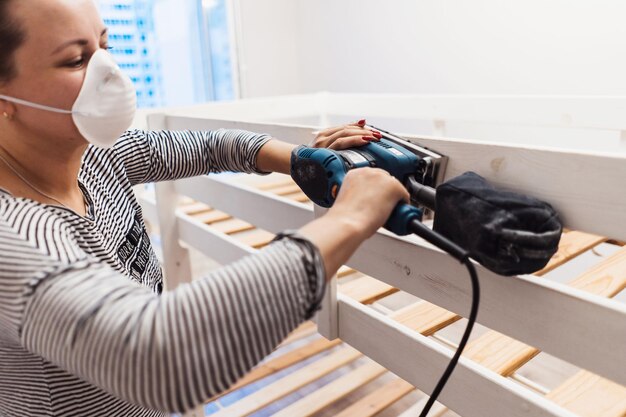Transforming Your Home for Safe Senior Living: From Grab Bars to Comprehensive Modifications
Aging in place is a choice many seniors are making today, as this allows them to enjoy the comfort and familiarity of their own homes as they grow older. However, home environments that were once suitable can become challenging as mobility, strength, and balance may decrease. To address these concerns, home modification services have come to the forefront, offering solutions that make living spaces safer and more accessible. Let's explore the vast landscape of these modifications, starting with the simple addition of grab bars and extending to full-scale home transformations.
Understanding Home Modifications for Seniors
Home modifications refer to the adaptations made in a person's home to ensure it remains safe and functional as their needs change. These renovations can be minor, such as installing grab bars, or extensive, like remodeling an entire bathroom.
Why Consider Home Modifications?
- Safety Improvement: The primary goal is to reduce the risk of accidents, particularly falls, which are a significant concern for seniors.
- Enhanced Accessibility: Modifications ensure that all home areas are accessible, even with mobility aids.
- Increased Comfort: By tailoring the living space to specific needs, seniors can enjoy increased comfort and independence.
- Cost-Effectiveness: Compared to the cost of assisted living facilities, home modifications can be a financially sensible option.
Starting with Grab Bars: The Simple Addition with Significant Impact
Importance of Grab Bars
Grab bars are the foundation of senior safety in the home. Installed in strategic places, they offer stability and support, reducing the risk of slips and falls in areas like bathrooms and stairways.
Placement of Grab Bars
- Bathrooms: Beside toilets, inside and outside shower stalls, and near bathtubs.
- Staircases: Along stairwell walls for additional support.
- Entryways: Near doorsteps or ramps to aid in stepping in and out.
Choosing the Right Grab Bars
- Materials: Opt for materials like stainless steel or plastic, which provide a good grip and are rust-resistant.
- Textured Grips: Textured grab bars minimize the chance of slips, especially in wet environments.
- Customization: Depending on the individual's height and reach, grab bars can be customized in length and installed at various angles.
Beyond Grab Bars: Comprehensive Home Modifications
While grab bars are a vital starting point, there are multiple other modifications worth considering:
Flooring Modifications
- Non-Slip Surfaces: Replace mats and rugs with non-slip options to prevent tripping hazards.
- Smooth Transitions: Ensure there are no sudden level changes between rooms; threshold ramps can help.
Bathroom Overhauls
- Walk-In Tubs and Showers: These are designed to provide easy entry without stepping over high tub walls.
- Adjustable Showerheads: A handheld, adjustable showerhead adds both comfort and safety.
- Height-Adjusted Fixtures: Toilets and sinks can be adjusted in height to match the user's needs best.
Kitchen Modifications
- Pull-Out Shelving: Allows for easy access to items without excessive reaching or bending.
- Counter Height Adjustments: Lower or raise counters to suit the ease of use.
- Stove Controls: Front-mounted controls prevent users from stretching over hot surfaces.
Stair and Hallway Adaptations
- Stair Lifts: For homes with more than one level, a stair lift can provide a safe transition between floors.
- Widening Doorways/ Hallways: Accommodate wheelchairs or other mobility devices.
Lighting Enhancements
Lighting is crucial for visibility:
- Motion-Sensor Lights: Automated lighting provides instant illumination to help navigate spaces safely.
- Task Lighting: Focused lighting in areas like the kitchen or reading nook enhances visibility and comfort.
Practical Tips for Implementing Home Modifications
- Assess Individual Needs: Consider the specific mobility and health conditions of the senior.
- Consult Professionals: Engaging with occupational therapists or home modification specialists can provide valuable insights into necessary changes.
- Prioritize Safety and Accessibility: Focus on areas that present the highest risk or most significant barriers to independence.
- Plan for the Future: Consider potential future needs to avoid repeated renovations.
Financing Home Modifications
Financial considerations are often at the forefront for families. Here's how you can navigate costs effectively:
- Budget Wisely: Start by determining a budget and prioritize essential modifications.
- Explore Government Programs: Look for grants and schemes designed for senior home adaptations.
- Health Insurance Options: Check if insurance covers part of the modification expenses.
- Reverse Mortgages: Consider these options if they align with financial planning and goals.
Quick Tips Summary 📝
- 🏠 Grab Bars: Install in bathrooms and stairways for immediate safety.
- 🛁 Bathroom Safety: Consider walk-in tubs and non-slip materials.
- 🚪 Widened Access: Improve doorways and hallways for easy maneuverability.
- 💡 Lighting: Ensure spaces are well-lit with motion sensors and task lighting.
- 💰 Funding: Look into grants, insurance, and loans for financial aid.
Embracing a Safe and Independent Lifestyle
Modifying a home for senior safety reflects a proactive approach to aging. It's about creating an environment where comfort, independence, and safety coexist harmoniously. Whether starting with grab bars or planning extensive changes, remember that every small adjustment contributes significantly to enhancing quality of life. Making these thoughtful changes ensures that the senior phase can be navigated with grace, dignity, and peace of mind.

Related Topics
- A Comprehensive Guide For Seniors: Embracing Creativity Through Art And Craft Classes
- A Comprehensive Guide To Estate Planning Services For Seniors
- A Comprehensive Guide To Home Security Systems For Seniors
- A Comprehensive Guide To Nutritional Counseling For Seniors
- A Comprehensive Guide To Recreational Activities In Senior Centers
- A Nourishing Guide To Liquid Nutrition Supplements For Seniors
- A Resourceful Guide To Senior-Friendly Meal Plans
- An Informative Guide: Captioned Telephones For The Hard-of-Hearing
- Boosting Your Brainpower: Engaging Activities To Enhance Cognitive Function In Seniors
- Comprehensive Guide To Maintenance Services For Seniors: From Lawn Care To Home Repair